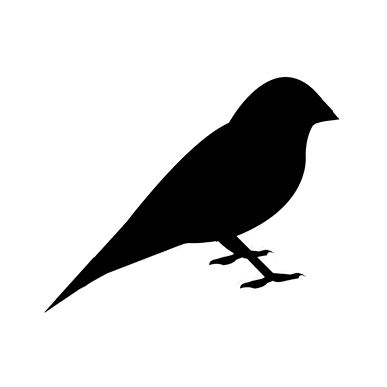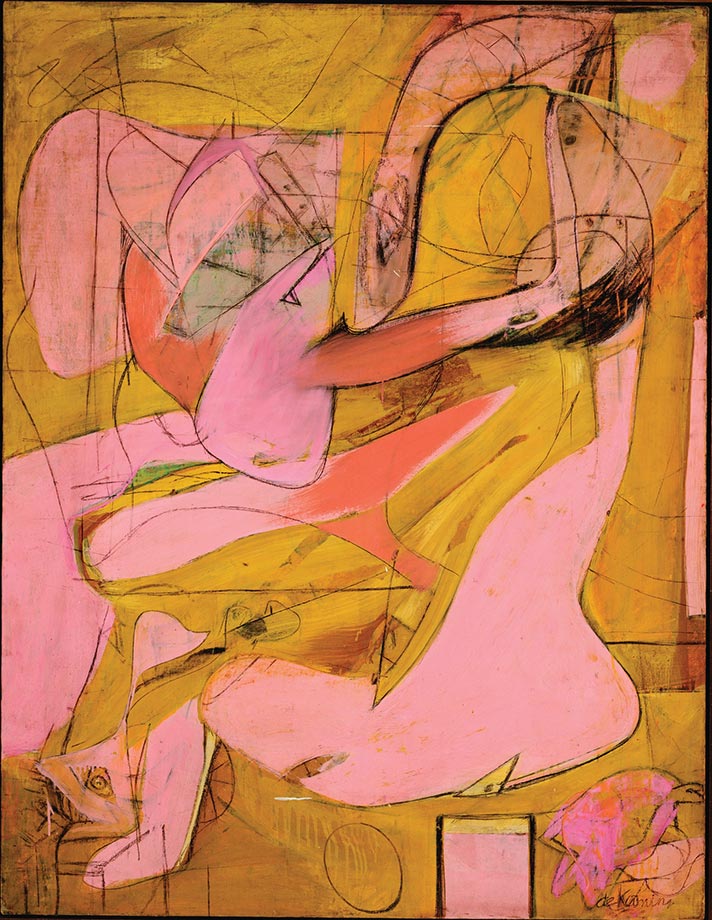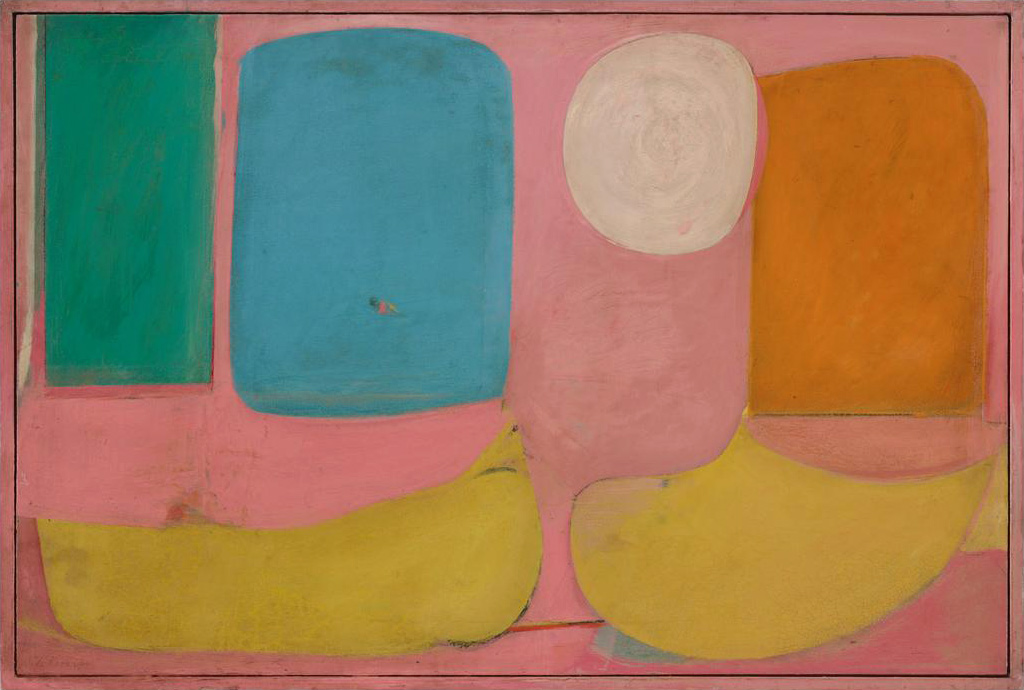Style is a fraud. I always felt that the Greeks were hiding behind their columns.
A Desperate View†

I am surprised to be here this evening reading my piece, for I do not think I am up to it. Barney Newman decided it really and he even gave the evening its name, A Desperate View….
+
My interest in desperation lies only in that sometimes I find myself having become desperate. Very seldom do I start out that way. I can see of course that, in the abstract, thinking and all activity is rather desperate. When an idea is given, one is stuck with it. You cannot help seeing it and even using it as a possibility.
In Genesis, it is said that in the beginning was the void and God acted upon it. For an artist that is clear enough. It is so mysterious that it takes away all doubt. One is utterly lost in space forever. You can float in it, fly in it, suspend in it and today, it seems, to tremble in it is maybe the best or anyhow very fashionable. The idea of being integrated with it is a desperate idea.

In art, one idea is as good as another. If one takes the idea of trembling, for instance, all of a sudden most of art starts to tremble. Michelangelo starts to tremble. El Greco starts to tremble. All the Impressionists start to tremble. The Egyptians are trembling invisibly and so do Vermeer and Giacometti and all of a sudden, for the time being, Raphael is languid and nasty; Cézanne was always trembling but very precisely.
The only certainty today is that one must be self-conscious. The idea of order can only come from above. Order, to me, is to be ordered about and that is a limitation.
An artist is forced by others to paint out of his own free will. If you take the attitude that it is not possible to do something, you have to prove it by doing it.
Art should not have to be a certain way. It is no use worrying about being related to something it is impossible not to be related to.

Style is a fraud. I always felt that the Greeks were hiding behind their columns. It was a horrible idea of van Doesburg and Mondrian to try to force a style. The reactionary strength of power is that it keeps style and things going.
It is impossible to find out how a style began. I think it is the most bourgeois idea to think one can make a style beforehand. To desire to make a style is an apology for one’s anxiety. Anyhow, I think innovators come at the end of a period. Cézanne gave the finishing touches to Impressionism before he came face to face with his “little sensation.”
Whatever an artist’s personal feelings are, as soon as an artist fills a certain area on the canvas or circumscribes it, he becomes historical. He acts from or upon other artists.
+
An artist is someone who makes art too. He did not invent it. How it started — “to hell with it.” It is obvious that it has no progress.
+
The idea of space is given to him to change it if he can. The subject matter in the abstract is space. He fills it with an attitude. The attitude never comes from himself alone.
You are with a group or movement because you cannot help it.
†Willem de Kooning. “A Desperate View.” Talk delivered on Friday, February 18, 1949 at Subjects of the Artist: A New Art School, 35 East 8th Street. Reprinted in Thomas B. Hess. Willem de Kooning. New York: The Museum of Modern Art, 1968: 15-16.
All quotations by Willem de Kooning © Estate of Lisa de Kooning.
The Finch is grateful to the Willem de Kooning Foundation for its permission to reprint “A Desperate View.” For more on Willem de Kooning in his own words, we recommend the Foundation’s collection of his lectures. The following citations may also be helpful:
In the Renaissance, when people – outside of being hung or crucified – couldn’t die in the sky yet, the ideas a painter had always took place on earth. He had this large marvelous floor that he worked on. So if blood was on a sword, it was no accident. It meant that someone was dying or dead.
It was up to the artist to measure out the exact space for that person to die in or be dead already. The exactness of the space was determined or rather, inspired by whatever reason the person was dying or being killed for. The space thus measured out on the original plane of the canvas surface became a ‘place’ somewhere on that floor. If he were a good painter, he did not make the center of the end of that floor – the vanishing point on the horizon – the ‘content’ (as the philosophers and educators of commercial art want to convince us nowadays that they did)…

The Dutchman’s hooking, rhythmic line evoked bodies in the jostle of elbow–forms and crotch–shapes, and drew them openly in the totemic Women. His paint surface was a membrane, now thick and now a wash, but always under some degree of torsion and tension from the boundaries of the forms.
My own personal, most dominate, influence as an American painter from the beginning has always been de Kooning and to this day I don’t think I have ever gotten over “Pink Angels” simply for the way in which de Kooning uses line as an articulating, overlapping depth element and for the way he plunges that extraordinary “hammer head shark”- like shape into the middle of that extraordinary painting.

